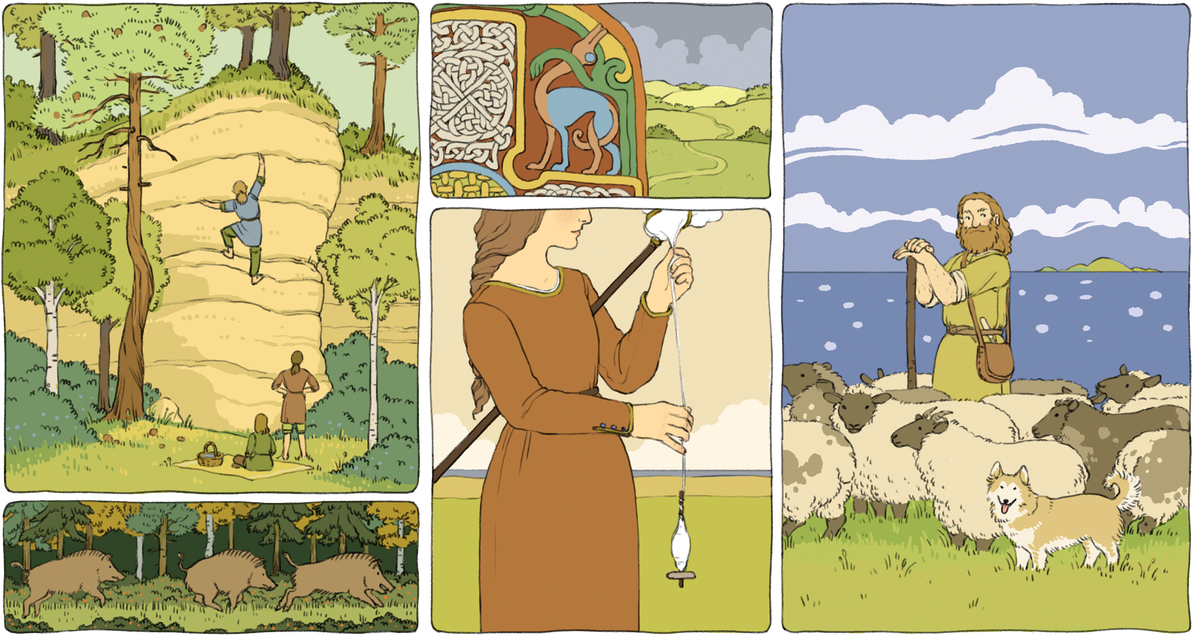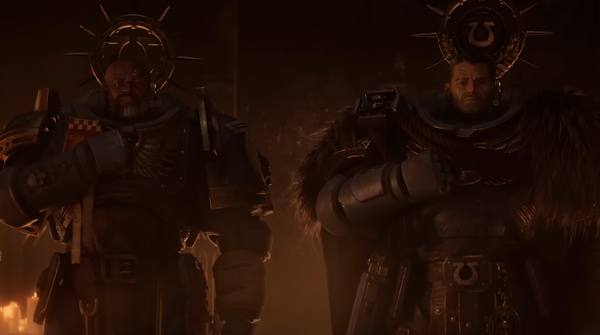Carved in Stone is both a history book and an eye-catching RPG
Publisher Brian Tyrrell and archeologist Heather Christie paint a pretty Pict-ure.

The Picts aren’t particularly well known even in their homelands around Scotland. They’re a pastoral people with their own language and history, their own kingdoms and their beliefs, and mostly they’re remembered as angry, blue axe-warriors. On some level, that’s understandable — it’s hard to know anything about anything when it happened more than 1,500 years ago.
Which is partly what makes Carved in Stone such an achievement. It takes dense, archeological information, with all its gaps and lacunae, and builds a colorful, vibrant, accessible book out of it. The design of the text is reminiscent of children’s encyclopedias with gorgeous illustrations and whimsical prose. Even as it arms readers with the tools of history, it constantly pushes them to exceed it, to play with it.
Unlike so many fantasy RPGs that use a historical aesthetic to ground themselves and seem more real, Carved in Stone does the opposite. It uses the conventions of a fantasy setting to capture the magic of real people from a forgotten time.
Rascal sat down with Brian Tyrrell, the founder of Carved in Stone publisher Stout Stoat, and Dr. Heather Christie, archeologist and lead researcher, about their shared journey to bring this book to life.
This interview has been edited for length and clarity.
Thomas Manuel: How did this project happen? Who emailed who?
Tyrrell: It started around five years ago. It is actually pre-pandemic by a couple months. I applied for a social media manager position at the Society of Antiquaries of Scotland. I did not make it to the interview. I get an email months later from the society, like, hey, so, the social media manager thing didn't work out, but we hear you make games. Tell us about that. Would you want to jump on a call at some point? And then we started talking. And the general outline was that there were these people, the Picts, and they wanted to find a new way of reaching general audiences. About who they were, what they did, dispelling common myths in the public consciousness. They thought a roleplaying game could be a really fun way to get hands-on with the past, and I agreed.
So, it started out with the idea that we would make a four-page pamphlet adventure — a BX module of a sword from the Battle of Nechtansmere, which was a big, defining event in Pictish history. Archaeologists don't know where the Battle of Nechtansmere happened. We've not found the battle site, and so it was meant to be that it could be anywhere, and you get to enjoy the past by looking for this sword from this battle.
And then every question I had to set up the background for this adventure led to six more questions. ho made the sword? How do they get the materials for the sword? Where did they live? How did they live? What do their houses look like? What are they eating? And what's their clothing like? All of these basic things that you could just make up if you were making a fantasy adventure or a sci-fi adventure. But the concept of this was that it was meant to be historically informed and that we were meant to be doing a Pictish adventure. Then, things spiraled.
We tried funding applications to organizations like Creative Scotland to pay for a bigger growing book of Pictish lore, and eventually we went to crowdfunding. After that, Heather joined the project as our official researcher. It has been a very long, very fun, very enriching four years with many, many questions that we had no idea were gonna crop up, and we now have a book about the Picts.
Manuel: Heather, can you tell me a little bit about your background and what was the primary challenge you saw going into something like this?





